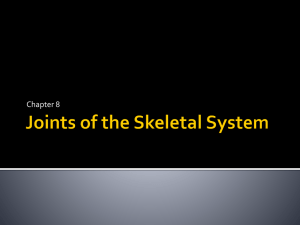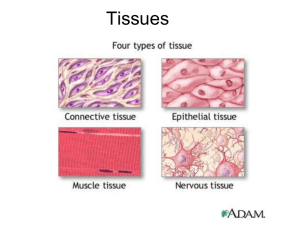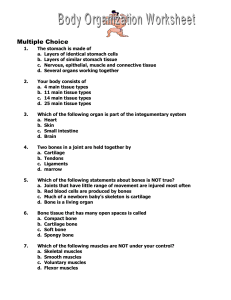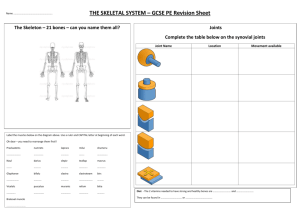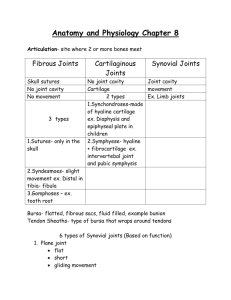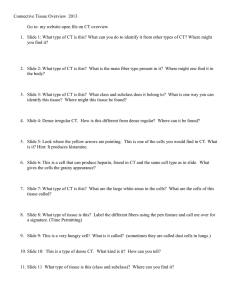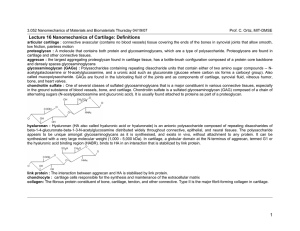a powerpoint presentation on Yr 10 24 Skeletal system
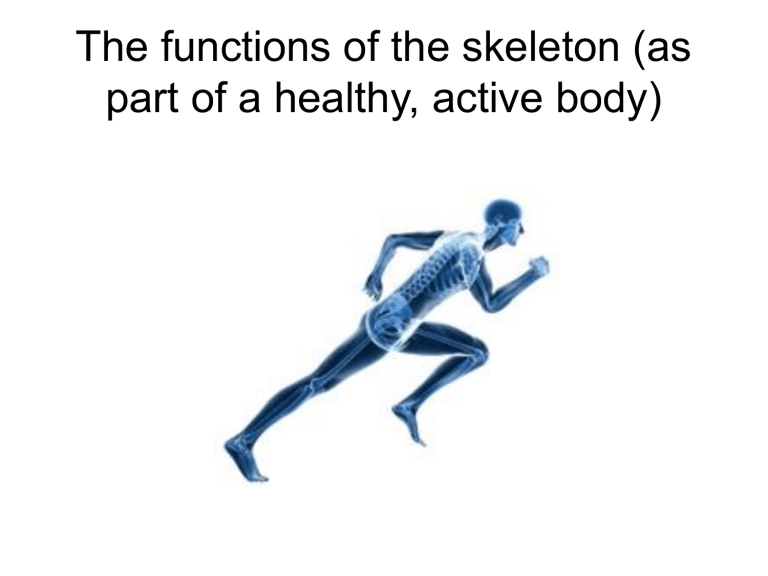
The functions of the skeleton (as part of a healthy, active body)
• Shape and support
(allowing good posture)
• Movement
Muscles attach to bones and create movement (levers) around joints
• Protect internal organs
• Produce red and white blood cells
• Store minerals
Task
• Label the bones on the skeleton
3 categories of joint
• Fibrous or fixed no movement
• Cartilaginous
• Synovial
slight movement
freely moveable
Hinge joint
• Movement in one plane only
• Eg knee, elbow
Pivot joint
• Only allows rotation
Eg neck vertebrae when turning head
ellipsoid
• Biaxial movement i.e. in 2 planes
Eg playing a badminton shot
gliding
• When two flat surfaces glide over one another
Eg carpal bones in wrist when playing hockey
Saddle joint
• When concave surface meets convex as in thumb gripping tennis racket
Ball and socket
• When a round head of bone sits in a socket – allows wide range of movement
Eg hip, shoulder
Cartilage Ligaments
• Soft connective tissue
• Babies skeleton is mainly cartilage – through process of
‘ossification’ mostly becomes bone
• Has no blood supply
• Connective tissue between bones
• Tough, resilient, keep joints together & stable
• Prevent extreme movement
• Resist dislocation
3 main types of cartilage
• Yellow elastic
• Hyaline (blue) articular
- flexible (ear lobe)
- on articulating surfaces of bones.
Protective - allows movement by limiting friction. Thickens through exercise
• White fibro - tough shock absorber, eg semi-lunar cartilage in knee joint
Cartilage & ligament injuries
• Repeated small injuries can lead to cartilage tears
• Degeneration (wear and tear of meniscus cartilage)
• Cartilage is slow to heal as it doesn’t have a blood supply
• Ligaments can sprain or tear
• Medial/cruciate – common knee ligament injuries
Movement at joints
• Flexion
• Extension
• Abduction
• Adduction
• Rotation
levers
Q’s
• 1. explain how the skeletal system responds to exercise (5)
• 2. name the two most common forms of arthritis and describe their causes (6)
• 3. which category of person is most likely to suffer from osteoporosis and what factors could contribute to this (3)
Answer 1
• short term – in joints stimulates secretion of synovial fluid, which becomes less viscous = greater range of movement
• longer term – connective tissue becomes more flexible. With time improved range of movement becomes more sustained. Bone increases in density = stronger = less risk of osteoporosis.
Hyaline cartilage, tendons and ligaments thicken
= reduced risk of injury. Bone mineral content higher
Answer 2
• Osteoarthritis – caused by ageing and general wear and tear, injury, overweight
• Rheumatoid – immune system attacks cells within joint capsule. Women more at risk, also genetic predisposition, smoking and obesity
Answer 3
• Women over 60
• Inadequate calcium and vitamin D intake
• Lack of weight bearing exercise

